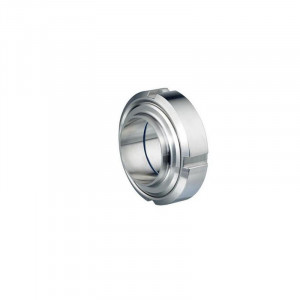DIN 11851 is one of the most widely used standards for industrial fittings. It has been in use for more than 50 years and is still in use today. What does this standard entail? Well, it’s a set of guidelines that provide manufacturers with the proper methods to produce and test industrial fittings. Why is this standard so important? Because it allows for a consistent and reliable quality product. In other words, if you use DIN 11851 fittings, your customers can rest assured that they’re getting a quality product every time. So why is DIN 11851 such a popular standard? Because it offers great flexibility and versatility. Plus, it’s easy to understand and follow. This makes it perfect for both professional and amateur manufacturers alike. Bottom line: If you have products that require industrial fittings, make sure you are using the latest and greatest standard – DIN 11851. It will ensure a quality product that your customers will love.

What are the benefits of using DIN 11851 fittings?
DIN 11851 fittings are popular for a number of reasons. They are easy to use, and typically have fewer parts than other types of fittings. Additionally, they are designed to be leak-resistant and rust-resistant, which makes them ideal for applications where water or other fluid flow is a concern. Some benefits of using DIN 11851 fittings include:
- They are easy to use.
- 2. They are designed to be leak-resistant and rust-resistant, making them ideal for applications where water or other fluid flow is a concern.
How to use DIN 11851 fittings
DIN 11851 fittings are increasingly commonplace in industrial and marine applications, as they provide a high degree of compatibility with a wide range of other fittings. In this article, we will show you how to use DIN 11851 fittings in your own projects.
To start with, make sure that the fitting you are using complies with DIN 11851. This standard defines the dimensions and tolerances for many common types of connectors, including hose bores, watertight joints, oil seal joints, and water-cooled joints.
Once you have determined the dimensions of your fitting, find the corresponding DIN 11851 part number. Most fitting manufacturers provide a catalog containing parts numbers for many common fittings. Alternatively, you can search online for part numbers for specific fittings.
Once you have found the part number for your fitting, find the appropriate description in the DIN 11851 standard. This description will tell you how to install and use the fitting. For example, if you need to connect two pipes using a hose barb connector, look for section 4.5.3 which describes how to connect two pipe ends using a hose barb connector.
Once you have found the appropriate section of the DIN 11851 standard, follow its instructions to install and use your fitting.
Why is DIN 11851 becoming more prevalent?
DIN 11851, formerly known as German Standard 8251, is a standardized system of screw threads and their dimensions. Its popularity stems from its wide acceptance in the manufacturing industry, as well as its simplicity and ease of use.
Conclusion
The prominence of DIN 11851 fittings in the marine and offshore industry is well-known. In fact, there are many meanings for the term “DIN 11851.” For example, it can refer to a fitting’s type (e.g., male), size range, threading method, etc. But more importantly, it can also refer to its compliance with specific requirements set forth by the German Standards Institute (DIN). Specifically, DIN 11851 addresses issues such as leak resistance and corrosion resistance for hoses and pipes used in maritime environments. By adhering to these standards, manufacturers ensure that their products are fit for use in an operating environment that is both hostile and corrosive. In this regard, Union Metal does very well so it has gained reputation for its high-quality products and prompt service.


Leave A Comment